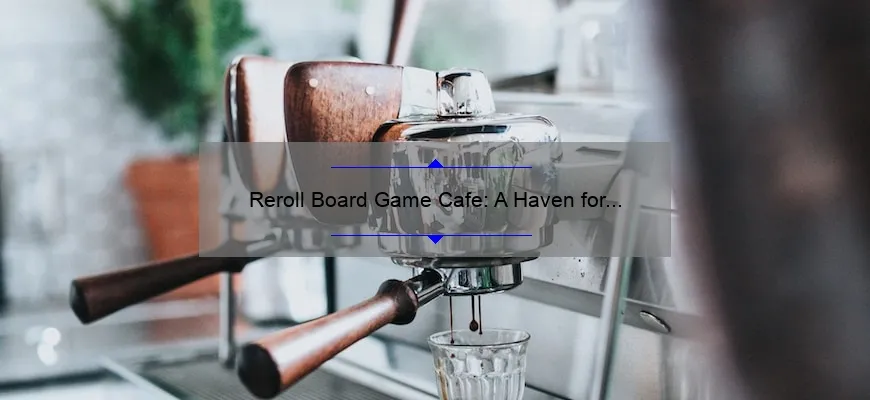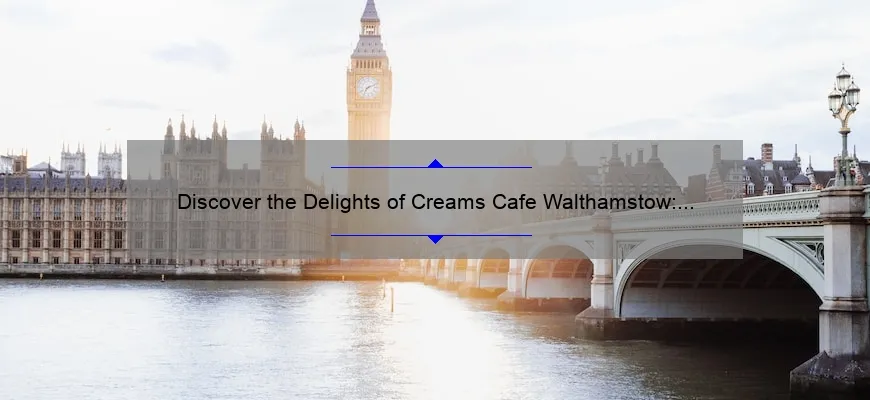Short answer classic cafe racer: A classic cafe racer is a lightweight motorcycle that originated in 1960s Britain. It has a stripped-down, stylish design, low handlebars, and rear-set footrests for better handling. The style is still popular today as riders mix old-school aesthetics with modern performance.
What is a Classic Cafe Racer?
A Classic Cafe Racer is not just a motorcycle, it’s an attitude. It represents rebellion, freedom and the love for speed. One could argue that the soul of a Classic Cafe Racer lies in its stripped-down design – without all the unnecessary bells and whistles found in other bikes.
The first cafe racers originated in Britain in the 1950s and 60s when young motorcyclists began customizing their motorcycles to make them faster, lighter and more agile so as to race from one cafe to another with ease. They wanted to be able to outrun anybody on the streets with style and grace.
The defining characteristic of a classic Cafe Racer is its look – typically distinguished by its low-slung handlebars, small fuel tank, rear-set foot pegs and sleek bodywork. The engines are powerful too – almost exclusively four-stroke air-cooled twins such as the Triumph Bonneville or Norton Commando which have now become synonymous with this iconic breed of motorcycle.
It’s worth noting that many of today’s modern ‘cafe racer’ styled motorcycles aren’t actually true ‘cafes’, they’re simply designed to look like one but don’t have any real cafe-racer history.Traditionally though, they were built out of necessity: riders needed fast bikes at low cost so they converted old machines into something new and quickly became popular amongst young & restless British bikers who wanted something fast, light & exciting.
The years have passed since then but the appeal of Classic Cafe Racers never waned – these days there are numerous builders around who specialize only in modern versions which keep alive these timeless two-wheeled creations. There will always be something about riding a classic café racer that speaks volumes about you as a person; fearless, daring yet possessing an air of classic sophistication.
So if you’re looking for a bike that truly embodies freedom and fierce individuality – look no further than a Classic Cafe Racer!
How to Build Your Own Classic Cafe Racer
Are you a lover of classic motorcycles? Do you aspire to own and ride your very own café racer? Well, the good news is that building your own classic café racer is possible even with little technical know-how. All it takes is the right attitude, a bit of willingness to experiment and learn and some mechanical skills.
First things first, what exactly is a café racer? A café racer is a type of motorcycle commonly associated with racing on public roads from one coffee house to another in 1960s Britain. These bikes were modified for speed and handling rather than comfort or practicality.
So, how do you go about building your own? Here are some tips:
1. Get the Right Base Bike: This is critical if you want to shine in the crowds as owning an original base bike will give you an advantage over others who resort to modifications on any other stock motorcycle. Classic base bikes like Honda CB750, Triumph Bonneville, Yamaha XS650 are perfect starting points.
2. Strip It Down: Once you have got the right base bike for your project then strip it down completely after removing all parts including bodywork.
3. Start Customizing: You can start customizing right away once parts have been removed; this includes fine tuning mechanics such as changing carburetors or ignition systems.
4. Upgrade Performance Parts: Installing new performance parts not only increases horsepower but also strengthens overall durability- best upgrade options include suspension components such as shocks, brakes etc.
5. Welding: Most custom cafe racers are built using materials such as steel tubes which require welding skills – it’s recommended that if you’re unsure about welding it press-worthy then make sure you seek professional advice before making final modifications from someone who has experience in this field.
6. Choose Smart Component Additions
It’s important when selecting additional components for your café racer build that they serve both style and practical functionality without compromising balance or safety of your ride. Popular functional additions include welding and installing an asymmetrical LED headlamp, incorporating a classic black leather coffee brown seat to put some style on your ride while ensuring comfort.
7. Plan The Paint Job
A fresh paint job is the perfect way to add the finishing touch to your build- opt for some vibrant colours such as orange, red or green that will make you stand out on track day! if not, then vintage white paint along with a minimalist logo will do wonders too.
In conclusion, building your own customized classic café racer bike may not be a walk in the park but with the right mindset and tools, it can be immensely satisfying and truly fulfilling. Follow these simple steps and you’ll be cruising around town like Steve McQueen in no time!
A Step-by-Step Guide to Restoring a Classic Cafe Racer
Restoring a classic cafe racer can be a fulfilling yet daunting experience. It requires time, patience, and dedication. With so many steps involved, it’s easy to get lost in the restoration process. Fortunately, this step-by-step guide is here to help!
Step 1: Research cafe racers
Before starting the restoration process, research cafe racers to gain a deeper understanding of what you’re working with. You’ll want to learn about the history of these motorcycles and their design characteristics. Go online or visit local bike shops and check out some classic cafe racer examples for inspiration.
Step 2: Find your ideal bike
Next, locate your ideal cafe racer candidate. A good place to start is online auction sites or classified ads. Be sure to purchase a motorcycle with a title as many states require one for registration purposes.
Step 3: Strip the bike down
Once you’ve jotted down everything you need on paper, disassemble all removable parts from the motorcycle: wheels and tires (with inner tubes), front forks (including fork tubes and springs), gas tanks, seats, handlebars, engine components; including exhaust pipes.
Step 4: Evaluate and Repair Frame Damage
Inspect the motorcycle frame closely after removing all parts associated with it; look for rusted areas that may require welding work or replacing altogether if damaged beyond repair – also keep an eye out for bent frames that need straightening back into shape before reassembling everything!
Step 5: Paint Job
The paint job is where creative flair comes into play when restoring your Cafe Racer. Choose colors that suit your personality – be bold with unique designs but always keep in mind simplicity over complexity for durability purposes.
Step 6: Replace All Necessary Components
This step involves checking all components such as cables & lines; brakes; transmission gears etcetera while repairing any necessary parts along the way – then replacing them accordingly using high-quality parts from reliable manufactures.
Step 7: Build The Engine and Gear Box
The engine is the heartbeat of your Cafe Racer. Repair any necessary components such as gaskets and seals, timing chains & gears before reassembling everything using high-quality products from a trusted store.
Step 8: Reassemble Everything Back Together
Once all components have been repaired or replaced accordingly, it’s time to put everything back together. Perform a quick inspection on each unit before securing it in place with bolts – do this until you’ve assembled everything into one package again.
Step 9: Test Ride The Finished Product
Congratulations! You’ve completed the restoration process! To make sure that everything operates smoothly, take your newly restored cafe racer for a test run. Start with shorter distances, gradually increasing the mileage traveled to test your bike’s capabilities over time. Drive sensibly, following local traffic rules and regulations, focusing on safety first and foremost.
The project may seem daunting at times; however, restoring a classic cafe racer demands attention to detail along with patience. With this step-by-step guide to help you out every step of the way – you’ll soon find yourself cruising effortlessly along on two wheels again!
Classic Cafe Racer FAQs: Everything You Need to Know
If you are a lover of classic motorcycles, then the chances are that you’ve come across café racers. The café racer is a style of motorcycle that is popular among enthusiasts due to its sleek design and exceptional performance. These bikes first emerged in the 1960s in London, where young people would customize their motorcycles to create a sporty look suitable for racing between cafes. Since then, they have become works of art for many collectors across the world. In this blog post, we will answer some frequently asked questions about café racers.
What is a Café Racer?
A café racer is a motorcycle designed for speed and handling rather than comfort or practicality. Their distinguishing features include low handlebars, elongated fuel tank, minimalistic frame and an aggressive riding position. They are often stripped down with just enough components that allow the bike to stand up to its intended function while keeping it light.
How Do Café Racers Perform on the Road?
Café Racers perform exceptionally well on city roads; they can outmaneuver other vehicles with ease. Due to their lightweight and excellent handling abilities, they can corner at high speeds and take sharp turns without feeling wobbly or unstable in any way.
Why Do People Like Café Racers So Much?
Café Racers appeal to motorbike enthusiasts because of their retro design, practicality, simplicity, and versatility. For owners that love tinkering with bikes and creating customized machines from scratch developed from pre-existing models, working on Café Racers offers such potential with minimal effort
Do You Need To Have Mechanical Experience To Own A Café Racer?
Having some technical knowledge when owning a café racer is necessary; however; it is not compulsory as most parts can be swapped without requiring extensive mechanics knowledge like detailed engine work should always be left specified experts.
Are There Any Risks Involved In Riding A Café Racer?
Due note that cafe racers require a different degree of riding skill compared to modern bikes. Riders must be aware that these bikes have speed and handling advantages on the road, but their sizes may make them hazardous to ride under hazardous weather conditions such as rain, storms or gusty winds.
Where Can I Find Café Racer Parts And Accessories?
Various stores that deal with bike products would likely stock up on those parts specific to Cafe racers . If there are none available within your locale, then the availability online is vast. You can find many customized parts and accessories suitable for both racing and everyday commuting purposes that suit your taste from various online stores like Dime City Cycles, Motorcycle Classics or Classic Bike Raisers.
In conclusion?
Café Racers are beloved because of their blend of classic style with excellent performance – which is why they have stood the test of time since introduction. They offer a unique opportunity for riders who wish to enjoy an exceptional motorcycle experience owning these works-of-art transforming them into custom beauties that exhibit both quality workmanship and functional appeal. Nonetheless,.regardless enjoyable as they are to own/race; it’s always essential riders put safety first while enjoying cafe racer rides.
The History and Evolution of the Classic Cafe Racer
The classic Cafe Racer motorbike is a unique and iconic symbol of the motorcycle industry. Originally designed and developed in the early 1960s, Cafe Racers have evolved dramatically over the years to meet ever-changing rider preferences and technological advancements.
So where did it all begin? Legend has it that the birth of the Café Racer dates back to England in the late 1940s. After World War II, young Britons were craving speed and adventure, which they found by modifying their bikes into high-performance machines. These modifications included removing any excess weight (such as fenders or mirrors) to increase speed and improve handling.
Over time, these modified motorcycles became known as “Cafe Racers”. The name originates from their popularity with young men who would often visit cafes after long rides out on their bikes.
Once manufacturers caught onto this trend, they began producing standard models that were much closer to describing what we think of today as a Cafe Racer – featuring lower handlebars, a slightly elongated fuel tank and rear seat cowlings.
It wasn’t until the 1960s that The Rocker subculture truly cemented the popularity of cafe racers within British youth culture due to their highly individualistic styling. It was during this period when brands such as Norton, Triumph and BSA became leading manufacturers in supplying parts for custom builds – allowing builders more creative freedom than ever.
However, by the end of this decade came significant changes in motorcycle design leading to many contemporary riders vouching against Classic Cafe Racers losing ground heavily to new sports bikes or cruisers arising rapidly due to trendier designs clinching market appeal.
Nevertheless, classic café racer remains a favourite among riders who appreciate its stripped-down style for both aesthetic purposes but also how great it is at taking corners smoothly without inducing too much vibration thereby enhancing stability at high speeds.
Overall, there is no denying that Café Racers have played a significant role in the history and evolution of motorbikes, all while retaining their unique identity. From their early beginnings as custom machines created by young rebels seeking adventure, cafe racers have come to symbolize individuality and freedom on two wheels.
Top 10 Most Iconic Classic Cafe Racers of All Time
If you’re a fan of vintage motorcycles, then you know that there’s something special about cafe racers. These motorcycles have a certain allure to them that makes them incredibly desirable even decades after they were first introduced. They’re sleek, fast, and capture the essence of an era when motorcycles weren’t just transportation but rather symbols of freedom and rebellion.
Today we’re going to take a look at the top 10 most iconic classic cafe racers of all time. Spoiler alert – if you’re considering taking out life insurance before reading further, it may be in your best interest!
1) Norton Manx: The Norton Manx was introduced in 1947 and quickly became one of the most successful racing motorcycles of all time. With its distinctive featherbed frame and powerful engine, the Manx was both beautiful to look at and thrilling to ride. It’s no wonder that this motorcycle is still highly sought after by collectors today.
2) Triumph Bonneville: The Triumph Bonneville is perhaps the most recognizable cafe racer on this list. Introduced in 1959, this motorcycle defined an entire generation of riders who wanted speed, style, and performance all in one package. Today, there are countless custom builds based on the Bonneville platform out there for those looking for new modern takes on a classic design.
3) BSA Gold Star: The BSA Gold Star was originally designed as a competition bike but quickly became popular with everyday riders as well due to its superior handling characteristics and performance. It’s distinct aluminum alloy fuel tank add characteristic touch for which it will always be remembered.
4) Triton: Although technically not its own brand or model line up – never stopped enthusiasts building their own creation from parts ‘Tri’umph & Nor’ton- building hybrids nicknamed Tritons – these creations were built in such high numbers they cannot go unnoticed from such lists.
5) Vincent Black Shadow: The Vincent Black Shadow is widely regarded as one of the most important motorcycles in history(EDIT OUT.). It was incredibly fast for its time, capable of reaching speeds of over 122mph. Even today, owning a Vincent is still a dream for many collectors around the world.
6) Honda CB750: The Honda CB750 was released in 1969 and quickly became one of the most iconic motorcycles of its era. It featured an inline-four engine which provided plenty of power, but also had a smoothness and reliability that made it perfect not just for racing but everyday use — something Mrs. Smith quite appreciated (waiting at home with warm dinner!).
7) Ducati Monster: The Ducati Monster has been in production since 1993, making it one of the more modern classic cafe racers on this list. Its minimalist design makes it incredibly popular with enthusiasts who prefer to customize their machines.
8) Laverda Jota: The Laverda Jota was produced during the late ‘70s – early ‘80s and remains an imposing figure decades later. Some have called it “the ultimate superbike” due to its remarkable speed and agility for its time.
9) Moto Guzzi V7 Sport: Introduced by Italian brand Moto Guzzi in 1971, the V7 Sport quickly gained a reputation for being one of the fastest bikes on two wheels back then especially given its relatively affordable price point compared with other European performance singles such as those from BMW or Norton.
10) Suzuki GT750 ‘Water Buffalo’: A water-cooled triple-cylinder bike from Suzuki? Yes please! As technology advanced a bit more towards end ’60s / early ‘70s water-wheel hybrids started emerging giving them distinct performance advantages over there air cooled counterparts which manufacturers were hopping on board too after considerable success on high horsepower jet skis engines starting years prior.. Eager enthusiasts loved this lighter feeling bikes and the gas mileage wasn’t too bad either.
And there you have it – our list of the top 10 most iconic classic cafe racers of all time. Each bike is unique in its own way, but all of them share that special quality that makes vintage motorcycles such beloved classics. Whether you’re a collector, rider or both – these machines offer something unforgettable for those wanting to look good on their prowling two-wheel beast either at bike show or short weekend blasts out into countryside!







